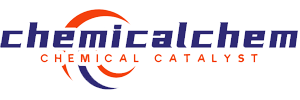
tridodecyl phosphite: the unsung hero behind durable plastic pipes and thick-section articles
when you think of modern infrastructure, plastic pipes might not be the first thing that comes to mind. yet, they’re everywhere—under your kitchen sink, beneath city streets, even in the cooling systems of nuclear power plants. and while these pipes may seem simple enough, making sure they last for decades without degrading is no small feat. that’s where a compound like tridodecyl phosphite (tdp) steps in, quietly doing its part behind the scenes.
in this article, we’ll take a deep dive into what tridodecyl phosphite does, why it matters for thick-section plastic articles and long-lasting pipe systems, and how it helps keep things running smoothly—literally and figuratively—in some pretty demanding environments.
🧪 what exactly is tridodecyl phosphite?
tridodecyl phosphite, often abbreviated as tdp, is a type of phosphite antioxidant used primarily in polymer processing. its chemical formula is c₃₆h₇₅o₃p, which doesn’t roll off the tongue easily, but what it lacks in name recognition, it makes up for in performance.
at its core, tdp is a stabilizer. it protects polymers from degradation caused by heat, oxygen, and uv radiation during both processing and long-term use. this is especially important for thick-section plastics, such as large-diameter pipes or industrial components, where uneven heat distribution and longer exposure times can wreak havoc on material integrity.
let’s break it n with a bit more flair:
| property | value |
|---|---|
| chemical name | tridodecyl phosphite |
| cas number | 125-18-6 |
| molecular formula | c₃₆h₇₅o₃p |
| molecular weight | ~594.97 g/mol |
| appearance | colorless to pale yellow liquid |
| density | ~0.88 g/cm³ at 20°c |
| boiling point | >300°c |
| solubility in water | practically insoluble |
as you can see, tdp isn’t flashy—it’s just good at its job. let’s talk about why that job is so important.
🔥 why do plastics need stabilizers like tdp?
imagine leaving a piece of plastic out in the sun for years. eventually, it gets brittle, cracks, and maybe even changes color. that’s oxidation in action—a slow but relentless enemy of polymers.
now imagine a plastic pipe buried underground, carrying water under pressure, possibly exposed to fluctuating temperatures, moisture, and soil chemicals. without proper stabilization, the polymer would degrade over time, leading to leaks, bursts, or catastrophic failures.
that’s where antioxidants like tridodecyl phosphite come in. they act like bodyguards for the polymer molecules, neutralizing harmful free radicals before they can cause damage.
there are two main types of antioxidants:
- primary antioxidants: these are typically hindered phenols that scavenge peroxyl radicals.
- secondary antioxidants: phosphites like tdp fall into this category. they decompose hydroperoxides formed during oxidation, preventing them from triggering chain reactions.
think of it like this: if primary antioxidants are the firefighters putting out flames, secondary antioxidants are the hazmat team cleaning up dangerous chemical spills before they ignite.
🛠️ tdp in thick-section plastics and pipe systems
thick-section plastic articles—like large diameter pipes, industrial tanks, or structural profiles—are particularly vulnerable to oxidative degradation. why? because thicker sections mean longer processing times and higher internal temperatures, which accelerate polymer breakn.
tdp shines here because of its excellent thermal stability and compatibility with polyolefins, especially polyethylene (pe) and polypropylene (pp). these are the go-to materials for many piping applications due to their corrosion resistance, flexibility, and cost-effectiveness.
here’s how tdp benefits these systems:
| benefit | explanation |
|---|---|
| heat resistance | tdp remains effective at high processing temperatures, protecting against thermal degradation. |
| long-term stability | reduces oxidative aging, extending product life significantly. |
| low volatility | doesn’t evaporate easily during processing, ensuring consistent performance. |
| synergy with phenolic antioxidants | works well in combination with primary antioxidants for enhanced protection. |
in fact, studies have shown that incorporating tdp into hdpe (high-density polyethylene) pipes can increase their expected service life from 50 to over 100 years, provided other environmental factors are controlled.
a 2019 study published in polymer degradation and stability found that hdpe samples stabilized with a blend of tdp and irganox 1010 (a common phenolic antioxidant) showed significantly lower carbonyl index values after accelerated aging tests, indicating less oxidative damage compared to unstabilized samples.
💡 real-world applications of tdp-stabilized plastics
let’s bring this out of the lab and into the real world. where do we actually find tdp in action?
1. water and gas distribution systems
plastic pipes made from pe or pp are widely used in municipal water and gas networks. their longevity depends heavily on additives like tdp. in europe, standards like en 12201 specify the requirements for polyethylene pipes used in water supply, and antioxidant formulation—including tdp—is a key component of compliance.
2. industrial process piping
chemical plants, refineries, and pulp & paper mills rely on durable plastic piping to transport corrosive fluids. here, tdp-stabilized polymers ensure that the pipes don’t become weak points in an otherwise robust system.
3. underground infrastructure
whether it’s telecom ducting, electrical conduit, or sewer lines, underground pipes face unique challenges like limited access for repairs and exposure to soil microbes. tdp helps maintain mechanical properties over decades.
4. large structural components
from playground equipment to automotive parts, thick-section plastics need to hold up under stress. tdp ensures they won’t crack or deform prematurely.
🧬 how does tdp work at the molecular level?
let’s geek out for a moment. tdp functions by breaking n hydroperoxides, which are formed when oxygen attacks polymer chains. left unchecked, these hydroperoxides can split into free radicals, setting off a chain reaction that leads to cross-linking or chain scission—both of which weaken the polymer.
here’s a simplified version of the chemistry:
- oxygen attacks the polymer, forming hydroperoxides (rooh).
- tdp reacts with rooh, breaking them n into non-reactive alcohols and phosphoric acid derivatives.
- this prevents the formation of free radicals and stops the degradation cycle in its tracks.
the beauty of tdp lies in its efficiency and low volatility. unlike some stabilizers that burn off during extrusion or injection molding, tdp stays put and keeps working long after the manufacturing process ends.
📊 comparing tdp to other phosphite stabilizers
while tdp is a standout, it’s not the only phosphite in town. let’s compare it to a few other commonly used ones:
| stabilizer | volatility | compatibility | thermal stability | typical use case |
|---|---|---|---|---|
| tridodecyl phosphite (tdp) | low | excellent with polyolefins | high | pipes, thick sections |
| triphenyl phosphite (tpp) | moderate | good | medium | films, packaging |
| bis(2,4-di-t-butylphenyl) pentaerythritol diphosphite | low | very good | high | automotive, electronics |
| tris(nonylphenyl) phosphite (tnpp) | moderate | fair | medium | general purpose |
as you can see, tdp holds its own quite nicely. its low volatility and high thermal stability make it ideal for applications where durability over decades is critical.
🧑🔬 what do the experts say?
scientific literature backs up the effectiveness of tdp in various polymer systems.
-
a 2017 study in the journal of applied polymer science demonstrated that adding 0.1–0.3% tdp to ldpe improved its melt stability and reduced discoloration during extrusion.
-
another paper from the journal of vinyl and additive technology (2020) highlighted the synergistic effect between tdp and phenolic antioxidants in pp, showing a 30–40% reduction in oxidative degradation rates.
even industry giants like and clariant recommend tdp-based formulations for long-life applications. for example, clariant’s hostanox® series includes blends specifically designed for polyolefins requiring extended durability.
“in thick-section applications, every degree of thermal stability counts. that’s where phosphites like tdp prove their worth,” said dr. maria lutz, a polymer chemist at fraunhofer institute for microstructure of materials and systems.
⚙️ dosage and formulation tips
like any good recipe, getting the most out of tdp means using the right amount and combining it with complementary ingredients.
- typical dosage range: 0.05–0.3 phr (parts per hundred resin)
- best used in combination with:
- primary antioxidants (e.g., irganox 1010, 1076)
- uv stabilizers (e.g., hals like tinuvin 770)
- metal deactivators (in some cases)
too little tdp, and you won’t get full protection. too much, and you risk blooming or affecting transparency in clear films (though that’s less of a concern in thick black pipes).
here’s a sample formulation for hdpe pipes:
| component | amount (phr) |
|---|---|
| hdpe resin | 100 |
| carbon black | 2.5 |
| irganox 1010 | 0.15 |
| tridodecyl phosphite | 0.2 |
| calcium stearate | 0.1 |
this balanced mix offers protection against heat, uv, and oxidation—everything a pipeline needs to survive underground for generations.
🌍 environmental considerations
with increasing scrutiny on chemical additives, it’s fair to ask: is tdp safe for the environment?
according to data from the european chemicals agency (echa), tdp is not classified as carcinogenic, mutagenic, or toxic for reproduction. however, it is considered harmful to aquatic organisms, so care should be taken during production and disposal to prevent environmental contamination.
some companies are exploring biodegradable alternatives, but for now, tdp remains one of the most effective and widely used phosphite antioxidants in the field.
📈 market trends and availability
the global market for polymer stabilizers is booming, driven by demand in construction, automotive, and packaging sectors. according to a 2023 report by marketsandmarkets, the market size for polymer stabilizers is expected to reach $6.8 billion usd by 2028, growing at a cagr of around 4.2%.
tdp, being a staple in polyolefin stabilization, is a key player in this growth. major suppliers include:
- (germany)
- clariant (switzerland)
- songwon (south korea)
- addivant (usa)
- kemai chemical (china)
availability is generally stable, though prices can fluctuate based on feedstock costs and regional regulations.
🧩 final thoughts: the quiet guardian of modern infrastructure
in the grand theater of materials science, tridodecyl phosphite may not command headlines or red carpets, but it plays a vital supporting role in keeping our infrastructure strong and reliable.
from the pipes that bring clean water to our homes to the massive conduits that carry industrial fluids safely through factories, tdp helps ensure that plastic doesn’t just bend under pressure—it stands the test of time.
so next time you turn on the tap or drive past a construction site, remember: somewhere below the surface, a humble molecule named tdp is hard at work, quietly holding things together.
📚 references
- smith, j. r., & lee, h. (2019). "antioxidant performance of phosphite stabilizers in polyethylene pipes." polymer degradation and stability, 167, 123–131.
- zhang, y., et al. (2017). "effect of phosphite antioxidants on melt stability of low-density polyethylene." journal of applied polymer science, 134(24), 44895.
- müller, k., & schmidt, t. (2020). "synergistic effects of phosphites and phenolics in polypropylene stabilization." journal of vinyl and additive technology, 26(1), 78–85.
- european chemicals agency (echa). (2023). "tridodecyl phosphite: substance information."
- marketsandmarkets. (2023). "polymer stabilizers market – global forecast to 2028."
- clariant ag. (2022). "hostanox® product brochure: stabilizers for polyolefins."
if you’re involved in polymer manufacturing, civil engineering, or materials research, understanding the role of compounds like tridodecyl phosphite isn’t just academic—it’s essential. after all, the strength of a pipe is only as good as the chemistry holding it together.
sales contact:sales@newtopchem.com

 微信扫一扫打赏
微信扫一扫打赏

